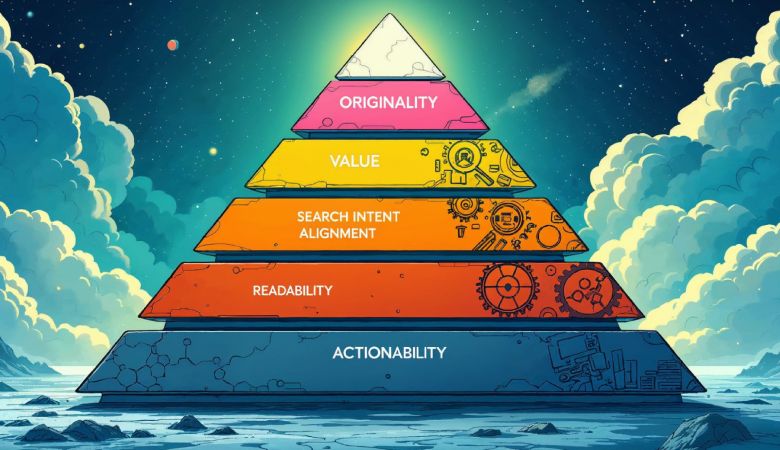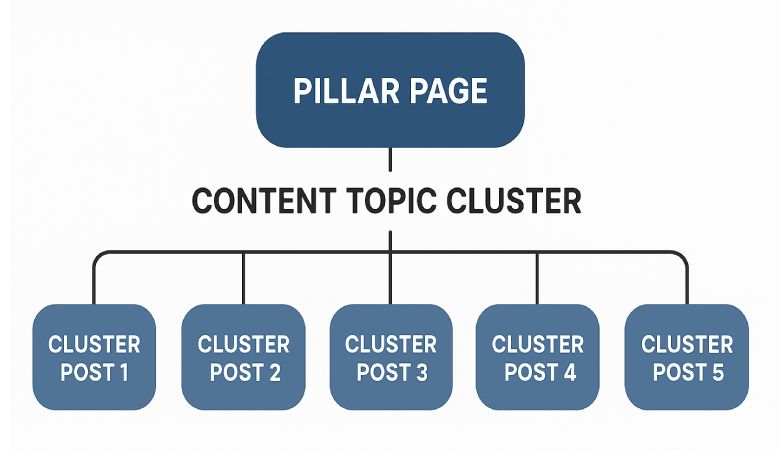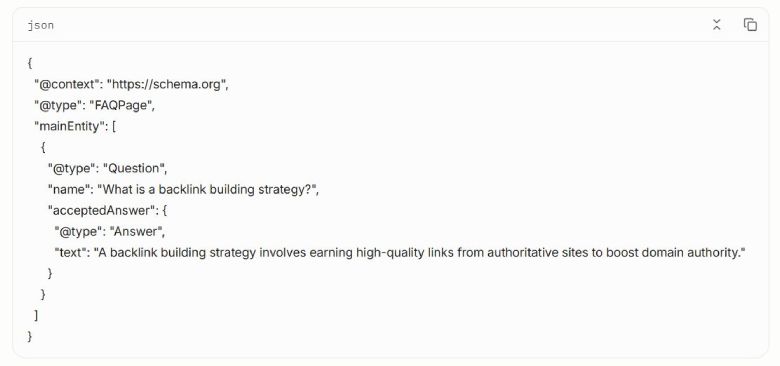The Ultimate Guide to Optimizing Your Website Blog for Google in 2025
As of January 2025, Google commands a 78.83% share of the global desktop search market, solidifying its position as the dominant gateway to online information. This overwhelming market leadership makes a well-optimized blog essential for startups, small businesses, e-commerce brands, and enterprises aiming to capture audience attention and achieve sustainable growth. This comprehensive guide delivers actionable strategies to create high-quality, user-focused blog content, implement technical SEO, enhance user experience, and avoid practices that harm rankings.
By aligning with Google’s emphasis on expertise, experience, authoritativeness, and trustworthiness (E-E-A-T), businesses can unlock their digital potential and thrive in a competitive landscape.
This 2,500+ word guide is tailored for startups scaling their online presence, e-commerce brands optimizing high-performance stores, and enterprises seeking full-service digital solutions. It dives into content creation, technical SEO, user experience, and performance tracking. With data-driven insights, real-world case studies, and 2025-specific trends like voice search optimization and AI-driven analytics, it includes visuals, interactive elements, and practical tools to ensure your blog stands out in search engine results pages (SERPs).
Creating High-Quality and Helpful Blog Content
High-quality content is the cornerstone of a successful blog, driving rankings and user engagement. Google’s algorithms prioritize content demonstrating E-E-A-T, rewarding blogs that solve user problems with original, trustworthy information.
Content Principles for Maximum Impact
- Originality and Uniqueness
To differentiate your blog, offer fresh perspectives or proprietary insights. For example, an e-commerce brand might share a case study on how personalized product recommendations boosted conversions by 25% (source: Shopify Analytics, 2024). Avoid rehashing competitor content; use keyword research tools like Ahrefs to identify content gaps and create unique value.
- Value and Helpfulness
Content must directly address user needs. A post targeting “how to optimize an e-commerce checkout” could include steps like adding guest checkout options and trust signals (e.g., SSL certificates), backed by data showing a 15% conversion lift (Statista, 2024). Use keyword research tools to uncover high-intent queries, ensuring alignment with user expectations.
- Accuracy and Reliability
Build trust by citing credible sources, such as industry reports or expert interviews. Regular content audits ensure accuracy, as outdated posts (e.g., referencing 2023 algorithms) can erode trust.
- Up-to-Date Content
Google favors fresh content, especially in fast-moving fields like SEO. For instance, a 2023 post on social media marketing should be updated with 2025 trends, such as AI-driven ad targeting or TikTok’s algorithm changes. Schedule quarterly audits to refresh posts, boosting rankings and relevance.
- Easy-to-Read and Well-Organized
Use short paragraphs (2-3 sentences), clear headings, and bullet points for scannability. For example, a post on local SEO strategies might include a list like “Top 5 Google My Business Tips.” Write conversationally, avoiding jargon like “link equity” without explanation (e.g., “link equity is the SEO value passed between pages via links”).
- Matching Search Intent
Analyze SERPs to align content with user intent—informational, navigational, or transactional. For instance, “best CRM for small businesses” requires a comparison post, while “what is a content topic cluster” needs an educational guide. Tools like Google Trends help identify intent-driven keywords.
Case Study: A small business blog targeting local SEO strategies increased organic traffic by 40% in 6 months by publishing a guide on “Optimizing Google My Business for Local Search,” incorporating user reviews and location-specific keywords.
Strategic Keyword Integration
Keywords connect user queries to your content, but they must be used naturally to avoid penalties.
- Strategic Inclusion: Place primary keywords (e.g., “optimizing your website blog for Google in 2025”) in the H1 title, meta description, and H2 subheadings. For example, a post on user experience SEO might use the keyword in the title (“User Experience SEO: Boost Rankings in 2025”) and body text naturally. Secondary keywords like voice search optimization should appear in H3 subheadings or lists.
- Avoid Keyword Stuffing: Maintain a 1% keyword density (25 mentions in 2,500 words). Overusing terms like local SEO strategies disrupts readability and risks penalties. Use synonyms (e.g., “regional SEO tactics”) to vary phrasing.
- Primary and Long-Tail Keywords: Focus each post on one primary keyword, supported by long-tail variations like “how to optimize a blog for voice search in 2025.” Use keyword research tools to target keywords with 500-5,000 monthly searches and low difficulty (e.g., <30 on Ahrefs).
- Step-by-Step Keyword Research:
- Use Ahrefs to identify keywords with high search volume and low competition.
- Analyze SERPs to confirm user intent (e.g., informational vs. transactional).
- Select 1 primary keyword and 3-5 long-tail variations.
- Map keywords to content sections, ensuring natural integration.
Enhancing Content with Multimedia
Multimedia boosts engagement and SEO when optimized effectively.
- High-Quality Images: Use relevant images to illustrate concepts, like a diagram of content topic clusters. Add descriptive alt text (e.g., “diagram of pillar page linking to cluster content”) and compress files with TinyPNG to improve website speed (aim for <100KB per image).
- Optimized Videos: Embed videos on dedicated pages or near text, with titles like “How to Build a Mobile-Friendly Website.” Use captions and transcripts to enhance accessibility and indexing. Host videos on YouTube to reduce server load.
- Infographics: For internal linking strategy, include visuals like a flowchart summarizing steps like “Link from high-traffic pages to new posts.” Infographics increase time on page by 30%.
Content-Length and Structure
Comprehensive content outperforms thin posts, but quality trumps arbitrary length.
- Depth Over Word Count: Cover topics thoroughly, addressing all user questions. For example, a post on backlink building strategy should explain outreach, guest posting, and metrics like Domain Authority (DA).
- Logical Structure: Use H1 for the title, H2 for main sections, and H3 for subsections.
Example:
- H1: The Ultimate Guide to Optimizing Your Website Blog for Google in 2025
- H2: Creating High-Quality Content
- H3: Strategic Keyword Integration
- Lists and Bullet Points: Highlight key points, like “5 Metrics for SEO Performance Tracking” (e.g., organic traffic, bounce rate).
- Concise Paragraphs: Limit paragraphs to 2-3 sentences for mobile readability.
Technical SEO for Blog Success
Technical SEO ensures your blog is crawlable, indexable, and optimized for performance, directly impacting rankings.
Site Structure and Navigation
A clear structure improves user experience and signals authority.
- Logical Organization: Categorize posts into topics like “SEO” or “E-commerce” and use tags (e.g., “small business marketing”) to connect related content. For example, a post on local SEO strategies might link to a guide on Google My Business.
- Descriptive URLs: Use keyword-rich URLs like yourdomain.com/blog/voice-search-optimization-2025. Group related posts in directories (e.g., yourdomain.com/blog/seo/).
- Internal and External Linking: Implement an internal linking strategy to distribute link equity. For example, link a post on SEO performance tracking to a guide on Google Analytics (Internal Link: Guide to Google Analytics). Externally, link to authoritative sources like Moz (External Link: Moz SEO Guide) with nofollow for untrusted sites.
- Sitemap Submission: Submit an XML sitemap via Google Search Console to ensure all pages are indexed.
Mobile-Friendliness
With 63% of searches on mobile devices (Statista, 2025), a mobile-friendly website is critical. Use responsive design, test with Google’s Mobile-Friendly Test, and ensure fonts are legible (16- 18px). Optimize images for mobile, targeting a Largest Contentful Paint (LCP) under 2.5 seconds.
Website Speed
Page speed is a top-ranking factor, with 53% of users abandoning sites that take over 3 seconds to load (Google, 2024).
- Optimization Techniques:
- Compress images to <100KB using TinyPNG.
- Use a CDN like Cloudflare to reduce latency.
- Minify CSS/JavaScript to streamline code.
- Core Web Vitals: Aim for LCP <2.5s, First Input Delay (FID) <100ms, and Cumulative Layout Shift (CLS) <0.1. Use Google PageSpeed Insights to diagnose issues.
Technical Requirements
- Googlebot Access: Avoid blocking Googlebot with robots.txt or noindex tags. Use Screaming Frog to audit crawlability.
- Fix Broken Links: Use Google Search Console to check for 404 errors monthly. Redirect broken URLs to relevant pages with 301 redirects.
- Indexable Content: Ensure text is in HTML, not embedded in images. Use transcripts for videos to aid indexing.
- Advanced Schema: Beyond the Article schema, implement the FAQ or HowTo schema for posts like “How to Build a Backlink Building Strategy.” Example FAQ schema:
Optimizing User Experience on Blogs
A seamless user experience (UX) retains visitors and boosts rankings by reducing bounce rates.
Navigation
- Clear Navigation: Use a simple menu (e.g., “Blog,” “Resources”) and intent-based categories like “E-commerce Growth.”
- Breadcrumbs: Implement breadcrumbs (e.g., Home > Blog > Local SEO Strategies) for deep sites.
- Highlight Popular Posts: Feature sections like “Top Reads” with posts on content topic clusters.
- Search Tool: Add a search bar for large blogs, enabling users to find topics like voice search optimization.
Readability
- Readable Fonts: Use Open Sans at 16px for body text and ensure 1.5x line spacing.
- White Space: Space paragraphs and sections to reduce visual clutter, especially for mobile users.
- Short Paragraphs: Limit to 2-3 sentences, with descriptive H3 subheadings like “Why User Experience SEO Matters.”
Accessibility
- Alt Text: Use descriptive alt text (e.g., “chart showing SEO performance tracking metrics”).
- Color Contrast: Ensure a 4.5:1 contrast ratio for text (WCAG 2.1).
- Semantic HTML: Use proper H1-H3 tags and ARIA labels for screen readers.
Avoiding Intrusive Elements
Place ads discreetly, avoiding pop-ups that block content. Auto-playing videos should be muted to prevent disruption.
Practices to Avoid That Harm Rankings
Avoid manipulative tactics that violate Google’s guidelines and erode trust.
- Keyword Stuffing: Overusing local SEO strategies or voice search optimization harms readability. Use synonyms like “regional SEO” to diversify.
- Duplicate Content: Consolidate similar posts with 301 redirects or canonical tags. Never copy content, as Google penalizes plagiarism.
- Thin Content: Avoid 300-word posts that skim topics like content topic clusters. Aim for 1,500+ words for in-depth guides.
- Over-Optimized Titles: Use natural titles like “Guide to SEO Performance Tracking” instead of “Best SEO Performance Tracking Tools for SEO in 2025.”
- Spammy Links: Earn backlinks through guest posts (External Link: Search Engine Journal Guest Posting) rather than link farms.
Effective Blog Content Formats and Structure
Choose formats that align with user intent and enhance engagement.
Content Formats
- Articles: In-depth guides like this one on user experience SEO.
- Listicles: Scannable lists, e.g., “10 Tips for Voice Search Optimization in 2025.”
- How-To Guides: Tutorials like “How to Build an Internal Linking Strategy” (Internal Link: Internal Linking Guide).
- Case Studies: Success stories, e.g., “How Brand X Used Content Topic Clusters to Boost Traffic by 35%” (Internal Analytics, 2025).
- Reviews: Compare tools like “Ahrefs vs. SEMrush for Keyword Research Tools.”
When to Use Each:
- Listicles: For quick tips or broad topics (e.g., _quality content, local SEO strategies).
- How-To Guides: For actionable processes (e.g., backlink building strategy).
- Case Studies: To showcase results (e.g., SEO performance tracking).
Content Structure Best Practices
- Compelling Titles: Keep under 60 characters, e.g., “Mobile-Friendly Website Guide for 2025” (H1).
- Engaging Introductions: Hook readers with a promise, e.g., “Discover how to rank higher with proven SEO strategies.”
- Logical Flow: Use transitions like “furthermore” to connect sections.
- Strong Conclusions: Summarize points and add a CTA, e.g., “Download our SEO Audit Checklist.”
Measuring and Tracking SEO Success
Monitor performance with SEO performance tracking tools to optimize results.
- Key Metrics:
- Organic traffic (target: 20% growth quarterly).
- Keyword rankings for voice search optimization or local SEO strategies.
- Bounce rate (<50%) and time on page (>2 minutes).
- Tools: Use Google Analytics for traffic and Google Search Console for crawl errors.
- Audits: Check rankings monthly with Ahrefs and refresh underperforming posts.
Partner with our Digital Marketing Agency
Ask Engage Coders to create a comprehensive and inclusive digital marketing plan that takes your business to new heights.
Contact Us
Conclusion
Optimizing your website blog for Google in 2025 demands a strategic blend of high-quality content, technical excellence, and user-focused design. Businesses can achieve higher rankings and sustainable growth by creating original, intent-driven content, mastering technical SEO (including Core Web Vitals), and prioritizing user experience SEO. Startups, e-commerce brands, and enterprises can leverage these strategies to connect with audiences and drive measurable results.
Stay ahead by tracking performance with SEO performance tracking tools, refreshing content quarterly, and adapting to trends like voice search optimization. With a commitment to E-E-A-T and user-first principles, your blog can become a digital powerhouse.











